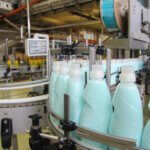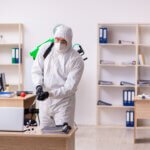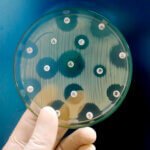Surface sanitizers are important to maintain hygiene and reduce the levels of microbial contamination in settings as varied as healthcare facilities and households. The EN 14476 standard is a key benchmark in assessing the efficacy of surface sanitizers. It describes a methodology for the evaluation of the virucidal activity of chemical disinfectants and sanitizers used in the medical area, thereby ensuring effectiveness against viruses in suspension.
What is the importance of EN 14476 certification?
Manufacturers and suppliers of disinfectants and surface sanitizers need to obtain EN 14476 certification. This certification ensures that the products meet strict health and safety standards and also builds trust among consumers and healthcare professionals. Surface sanitizers that are EN 14476-certified, are proven to be effective against a broad spectrum of viruses, including enveloped viruses and non-enveloped viruses, thus playing an important role in infection control strategies.
EN 14476 certification process
The procedure for obtaining the certificate of EN 14476 for surface sanitizers involves several stages. This standard was established to evaluate and certify disinfectants and sanitizers, indicating that they can have virucidal characteristics. The certification of EN 14476 is necessary for the disinfectants and surface sanitizers that are used in the field of medicine and public health safety as the use of a proper disinfectant is critical to stop the spread of viral infections. Below is a concise explanation of how to obtain the certificate.
1. Understand the standard
Manufacturers of disinfectants and sanitizers should first thoroughly understand the EN 14476 standard before taking up testing and certification of their products. EN 14476 standard specifies the test methods and requirements for testing the antiviral activity of the product on hard, non-porous surfaces, hands, and instruments in medical areas.
2. Product evaluation and preparation
The first step of the certification process involves assessing the product intended for testing and proper preparation of it according to the standard’s requirements. In this regard, the concentrations, formulations, and test conditions need to be defined to which the product is subjected. Manufacturers should ensure that the product is stable and could demonstrate its performance under the test conditions.
3. Virus selection
To claim broad-spectrum virucidal activity, the disinfectant should be tested against a specific list of viruses according to EN 14476. These include both enveloped viruses such as Vaccinia virus, and non-enveloped viruses such as Adenovirus, Murine norovirus, and Poliovirus. The selection of viruses depends on the intended use of the product and the claims that the manufacturer wishes to make.
4. Laboratory testing
The testing should be performed by a laboratory expert in microbiological and virological analyses. The laboratory will conduct a series of quantitative suspension tests. A quantitative suspension test quantitatively determines the reduction of virus infectivity that results from the application of the disinfectant under conditions that are controlled. The tests shall involve mixing the disinfectant with a test virus and then quantifying the number of the infectious virus particles which remain after a specified contact time. Each product shall be tested at a specific concentration, temperature, and for definite contact times to prove the product’s virucidal activity against mandatory test strains such as Poliovirus, Adenovirus, and Norovirus.
5. Documenting and reporting
A detailed report of the test method used, the results obtained, and the conclusions made ought to be prepared. The report should also state whether the disinfectant meets the criteria set (4 log reduction or 99.99% antiviral activity) in the EN 14476 standard on virucidal activity.
6. Certification
In the case when the test results indicate that the requirements of the standard are met and the product has proven to ensure a 4 log reduction or 99.99% antiviral activity, the certification of EN 14476 is obtained. It is granted in the following way: the testing laboratory or certifying body issues a certificate in which they claim that the product is effective against viruses which have been tested under the conditions mentioned.
7. Quality assurance and monitoring
After certification, manufacturers have to institute continued quality control and monitoring to make sure the product continues to meet the standards. This means regular retesting and validation more so in the case of any changes in the product formulation or in the manufacturing process.
8. Labeling and marketing
Finally, after the product has been EN14476 tested, manufacturers can appeal to the regulatory bodies and claim on the label “EN 14476 certified” or the family of viruses for which the product has been proven to be effective. This gives a unique marketing advantage for the consumer to choose such products with a high confidence level of virucidal efficacy.
What are the challenges in obtaining certification?
The following are the challenges faced during the EN Certification process:
- The test in EN 14476 requires applying to the letter the strictly standardized laboratory conditions and protocols.
- Need of intricate documentation with proof to actually show the claims of product efficacy
- Use of strains of viruses other than those contained in the vaccine, as well as conditions of testing that may influence the result of the test.
- Smaller manufacturers would, therefore, feel the high costs of testing and certification as a barrier to entry.
The Role of Microbial Investigations Switzerland
Microbial Investigations (MIS) Switzerland plays an important role in helping manufacturers understand the complexities of EN 14476 certification. As a leader in microbial testing and certification, MIS offers:
- Expert guidance on the selection of appropriate test viruses and test conditions
- Validation of disinfectants and surface sanitizers under conditions that almost mimic real-world scenarios to ensure their effectiveness and compliance with EN 14476
- Assist in interpreting the test results and in making necessary adjustments to the product formulations to meet the required standards
With cutting-edge facilities and a team of experts dedicated to ensuring the highest standards of testing, MIS provides comprehensive evaluations that adhere to international guidelines. Our meticulous approach and commitment to excellence make us a trusted partner for antimicrobial analysis.
For inquiries or further information about the EN 14476 testing we provide, please feel free to get in touch with our experts here.









